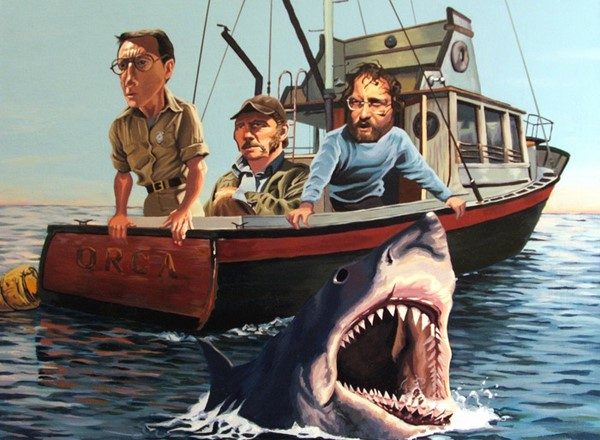Highlander (1986)
I saw this film with my wife when it first came out and we enjoyed it but frankly, I did not think it was a great film. It is a popcorn picture that looks a little cheaper than it should. They must have spent most of the budget on Sean Connery for his brief time in the story. I enjoyed Christopher Lambert in “Greystoke: The Legend of Tarzan” two years before. He was okay in this film, but it was clear that he was going to get by on physical charisma in his career and not acting chops. Clancy Brown on the other hand, understood the assignment and went full on nuts. He mugs and hams it up, just the way his character should.
Sean Connery, shows up for the second act and plays the part of a mentor to Lambert’s Conner MacLeod. Much ridicule has been made over the years of his being cast as an Arab, from Spain, with a Scottish Accent. However, it may not be inconceivable that in the 1200 years he was alive, he picked up some traits from all the places that he’s lived. Also, if that is the credibility stretcher for you, you have not been paying attention.
The best element of the movie is the notion that immortality takes it’s greatest toll on those that we love and must leave as they die. MacLeod suffers from his loss obviously, but the strain on his Scottish wife was pretty well drawn in the film. Another character from the 20th Century illustrates it as well. I don’t want to give the movie too much credit, it is still a cheesy piece of pop fantasy, but it is completely watchable and I enjoyed the revisit.
Local Director and friend of the Paramount, Robert Rodriguez, hosted and scheduled this program. He does a nice job talking about the films and the film makers that he had connections with. He shared his story about this movie in the conversation you can listen to below.
The Untouchables (1987)
The second film in our double feature is the terrific Brian DePalma movie, “The Untouchables”. It is impossible to imagine a better Sean Connery part (with the exception of the film I will be writing about next). Connery plays a put upon beat cop, who has resisted temptation and played straight with the law instead of getting into bed with mobsters. He becomes a mentor to the enthusiastic but as yet untested Elliot Ness, a Treasury agent, in pursuit of Al Capone.
The relationship between Ness and Jimmy Malone (Connery) is funny, fatherly and frustrating at times. Jimmy needs to trust Ness and Ness takes some getting used to because of some tentative characteristics. The team gets substantially enhanced by Andy Garcia as a rookie cop, with deadly shooting skills, who gets drafted into their unit. Garcia is fine in the action scenes but doesn’t have as much to say in the rest of the plot. Charles Martin Smith however, as Treasury Accountant and agent Oscar Wallace, is a delight in bringing a spark to the team because of his distinctive background. He is the square peg that they find a way to fit in.
The bad guys are pretty vivid with Robert DeNiro hamming it up as Capone. Billy Drago is a chilling Frank Nitti and his comeuppance is one of the great satisfactions of the film. DeNiro’s scene with a baseball bat in his hand is his big moment on screen. The scene is directed with the usual style of Brian DePalma, it is elegant, and suddenly violent in an ugly way. The two big set pieces of the film are the border raid and the train station shootout. Both of these are strongly enhanced by my favorite Ennio Morricone score.
I have seen this movie dozens of times, and probably a half dozen times on the big screen. My first viewing was at the Cinerama Dome in Hollywood when the movie opened in 1987, it remains another hallmark moment in my Dome history. I am glad I can now pair it with a screening at the beautiful Paramount Theater in Austin.





















